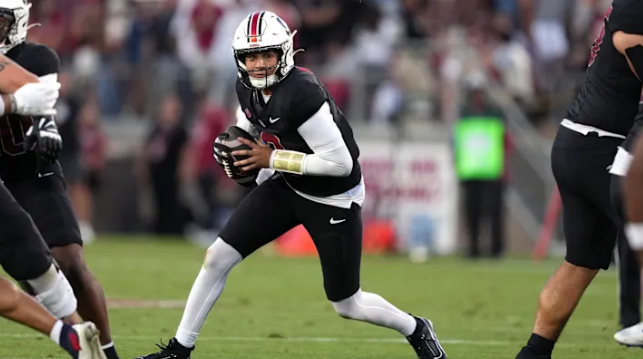Spring Signals: Emerging Talent and Tactical Shifts in Stanford Football’s Offseason Grind
As Stanford Football enters a pivotal stretch of spring workouts, the program finds itself at a crucial turning point. Following a challenging 2024 season marked by growing pains and roster transitions, the Cardinal are using spring as a foundation-building period—a time to recalibrate, redefine their identity, and ignite competition across all position groups. The energy on the practice field is unmistakable, and the early signals from spring suggest that changes are underway both in talent development and tactical approach.
One of the most noticeable themes emerging this spring is the rise of young talent eager to step into larger roles. With several veterans having departed and a number of incoming transfers and recruits integrated into the mix, head coach Troy Taylor has emphasized open competition. Redshirt freshmen like wide receiver Jalen Bradford and linebacker Marcus Holmes have turned heads with their explosive play and football IQ. Bradford, in particular, has drawn praise for his route-running polish and reliable hands, making him a prime candidate to become a key target in Stanford’s evolving passing attack.
On the defensive side, Holmes has showcased the kind of sideline-to-sideline speed that has been sorely needed in the Cardinal’s linebacker corps. His ability to diagnose plays quickly and communicate on the field signals leadership potential, even as a younger player. The coaching staff has made it clear that seniority won’t determine starting spots—production and consistency will.
From a schematic standpoint, Stanford is also experimenting with new wrinkles on both sides of the ball. Offensively, Coach Taylor appears more committed to implementing a faster-paced, spread-style attack, aimed at creating mismatches in space and maximizing the skill sets of his versatile playmakers. Quarterback competition remains ongoing, but sophomore Aidan Peters and transfer signal-caller Malik Freeman have both flashed command and composure during scrimmages. Peters has improved in his pre-snap reads, while Freeman brings dual-threat capability that could change the dynamic of the offense entirely.
Defensively, Stanford is moving toward a more aggressive alignment, with an emphasis on press coverage and blitz-heavy packages. Defensive coordinator Bobby April Jr. has stressed the importance of disrupting timing and creating turnovers—areas that were major weaknesses in 2024. Early returns suggest improved cohesion among the secondary, with cornerback Elijah Sinclair playing a standout role during one-on-one drills.
Perhaps most importantly, the culture around the program feels different. There’s a renewed sense of urgency and accountability, especially among returning upperclassmen who have experienced the growing pains firsthand. Leadership council meetings, player-led film sessions, and increased attention to detail during workouts all hint at a team that understands the stakes and is determined to turn the corner.
Spring workouts don’t guarantee fall success, but they offer a critical glimpse into trajectory—and so far, Stanford’s is trending up. With new contributors emerging and tactical adjustments being embraced, the 2025 season may very well mark the beginning of a new era for Cardinal football.
















